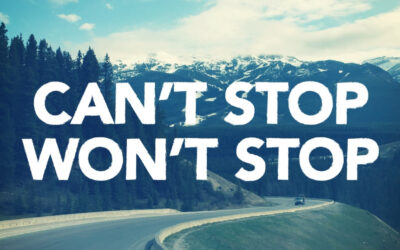It’s very easy to accept your limitations and conform to societal norms. It is much more difficult to challenge common wisdom and believe that something bigger is possible.
Over a decade ago I had my first knee surgery and was told my running days were over. For many years I accepted this truth, avoided running and instead pedaled my bicycle and Nordic skied for aerobic exercise. As it turns out too much cycling can also wreck havoc on your joints and leave you in pain.
Now what? I was told not to run, cycling hurt and I found swimming tedious and boring. Give up and become a couch potato? Not Me! I had to find a way to stay active…
Logic and the medical community had convinced me not to run. That it was bad for me. Damaged joints will only get worse under the strain of running. I should just find something else to do. But I didn’t want to. I didn’t and wouldn’t accept it. I don’t know why. I suppose it’s like the kid when told she can’t have something becomes even more determined to get it. Tell me I can’t physically do something and the drive is even greater, I’m just a rebel at heart. Born to be wild and all that…
Don’t get me wrong, I do heed the advice of “if it hurts don’t do it.” I’ve heard that many times and know that my body’s pain needs to be listened to and addressed, not bulldozed through. Advice, however, that is in contrast to what I want should be questioned and challenged. I hadn’t even tried to run, so how could I know if it would hurt or be pain free?
Further support for my running fantasy came from my posture studies. Running was touted as the number one activity for the body, putting it in the most natural alignment. Additionally, the pounding of running is excellent for Osteoporosis prevention, which I need. I learned that it is the body I bring to running not running itself that is harmful. Working on my misalignments and musculoskeletal function would enhance my chances of running successfully.
The benefits of running and my desire to try were mounting. Then came the book “Born to Run” and the explosion of information on running technique to prevent pain and injury. I knew if I wanted to run consistently again I’d need to find my best stride.
Finally, despite my doctors advice but with the support of my posture therapist I began to run. Slowly at first and only on the track. Gradually I moved onto the trails to compete in 10 mile, half marathon and 15 mile events. Nearly four years to the day of starting posture therapy I ran my first marathon. I was thrilled! Running faster and stronger than I thought I could with minimal pain and a quick recovery.
This result did not happen without my doubts. A few weeks before the event I had told my husband I wasn’t ready, I couldn’t do it. During training I had battled shin splints, ankle pain, Achilles tendonitis, arch pain, IT band syndrome and more. I respect my body and didn’t want to injure myself, it wasn’t worth it. He listened, smiled and reassured me, although somewhat dismissively “Ah, you’ll be fine”. He was right!
Three knee surgeries, hip surgery and a diagnosis of severe hip Osteoarthritis worthy of a hip replacement didn’t stop me. As the saying goes, You can do more than you think you can! Don’t limit yourself, conquer your fears and achieve your best.



